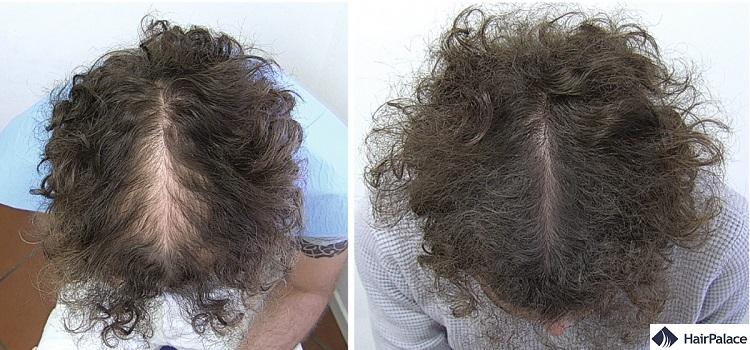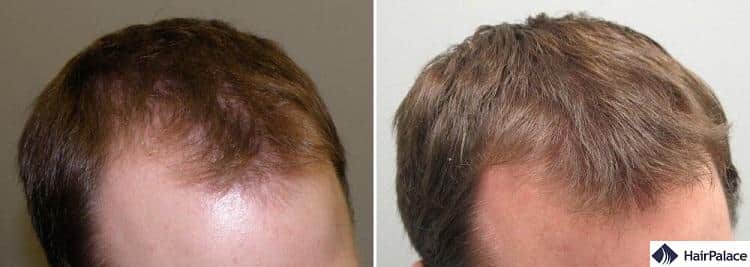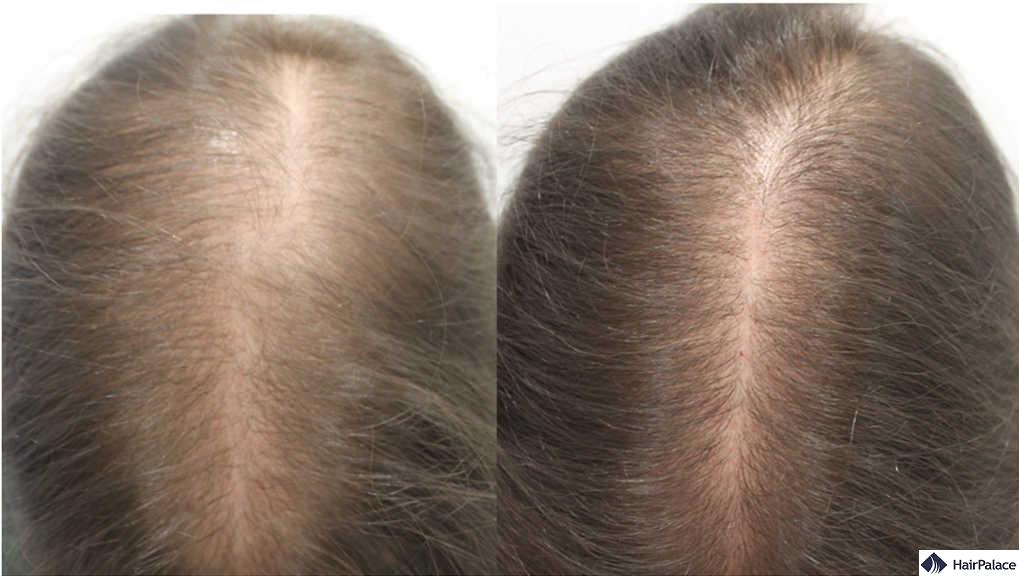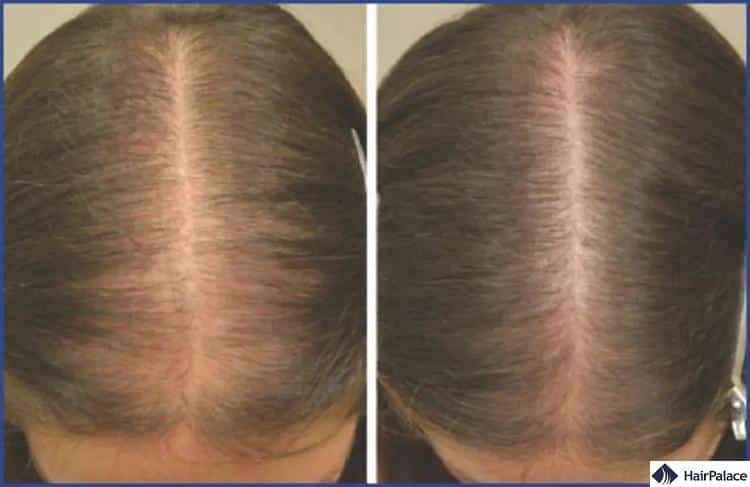Topical Finasteride for Hair Loss: Does it Work?
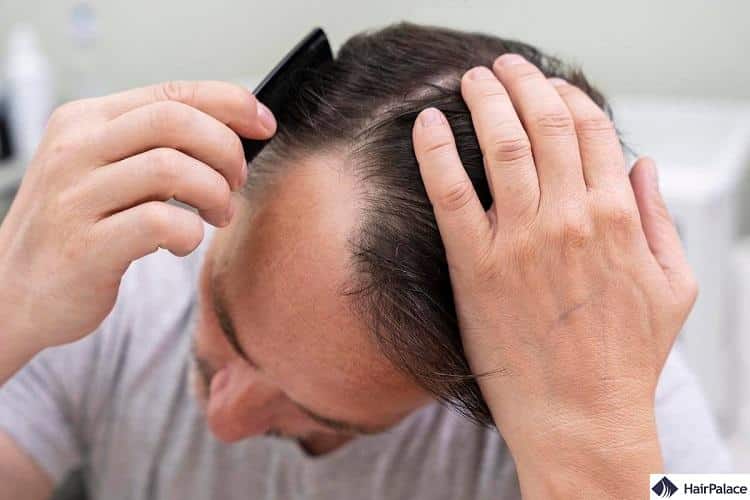
Many doctors and hair care specialists are putting their faith behind a new development in hair loss treatments – topical finasteride.
Topical finasteride is a medication applied directly to the scalp to treat male pattern baldness.
Unlike oral finasteride, which is taken as a pill, the topical form aims to reduce systemic absorption and minimize potential side effects, such as sexual dysfunction.
It works by inhibiting the enzyme 5-alpha-reductase, which converts testosterone to dihydrotestosterone (DHT), a hormone that causes hair follicles to shrink.
Studies have shown that topical finasteride can be effective in promoting hair growth and reducing hair loss with a lower risk of systemic side effects compared to the oral form.
This article will explore everything you need to know about this exciting new treatment.
What is topical finasteride?
Topical finasteride is a prescription medication used for treating the most common hair loss condition worldwide; androgenetic alopecia (male pattern baldness).
Finasteride can help slow down the progression of hair loss and promote hair regrowth. It does so biologically by blocking an androgen called dihydrotestosterone (DHT).
DHT is a derivative of testosterone and, in high levels, is known to disrupt the hair’s natural growth cycle.
It gradually shrinks a hair follicle to such a degree that it cannot grow or sustain new strands.
Two forms of finasteride are commonly prescribed – oral form and topical form.
Though oral treatments are more well-known, growing research suggests that topical finasteride applied directly to your scalp can yield the same benefits as its oral form but with fewer potential side effects.
Though generally safe and effective for many people, you do need to consult your doctor before using this treatment, especially if you are a woman, pregnant, breastfeeding, or have an underlying condition that may react to its ingredients.
Additionally, you must follow the instructions accompanying this medication to keep yourself safe and obtain the best possible results for your hair.
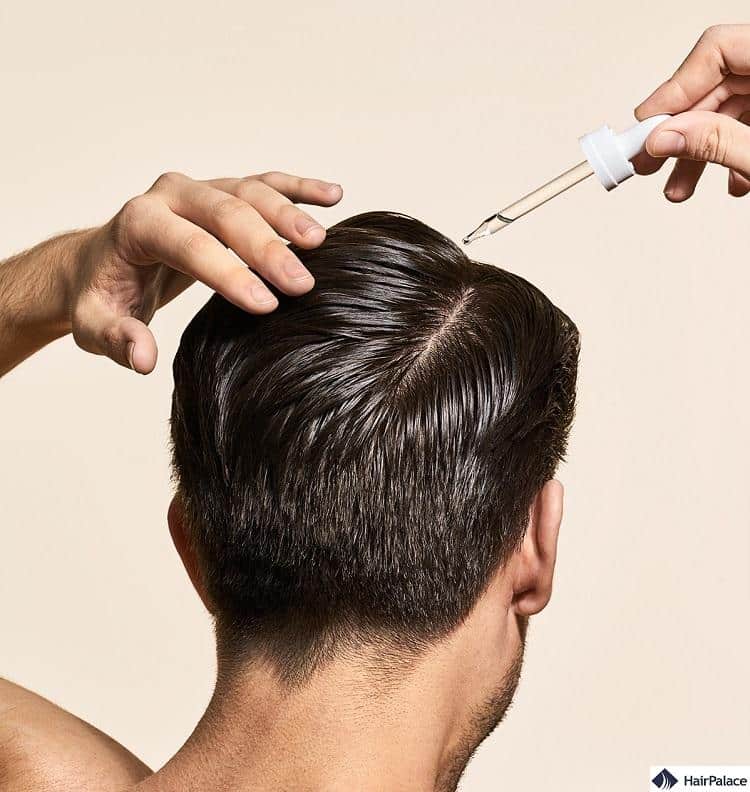
What’s the difference between oral and topical finasteride?
Oral finasteride has been the standard way to administer the drug.
Only in recent years have scientists and researchers begun comparing oral finasteride vs topical forms to see which is more effective.
It’s thought that topical finasteride has a lower risk of developing severe side effects.
This includes developing sexual dysfunction, erectile dysfunction, and benign prostate hyperplasia (enlarged prostate).
That said, topical treatments have an increased risk of causing skin irritation.
It can be a great alternative if patients are afraid of developing severe side effects and reactions, who may want to buy cheaper medication, or who don’t enjoy taking tablets.
Overall though, both topical and oral finasteride can achieve the same results.
Topical medication often has a lower concentration of active ingredients, so it may not be as quick as its pill form.
For this reason, topical finasteride is often combined with other medications, like topical Minoxidil, to increase its potency and effectiveness.
Ultimately, your doctor or dermatologist can examine your hair loss and recommend which treatment will suit your current state of androgenetic alopecia.
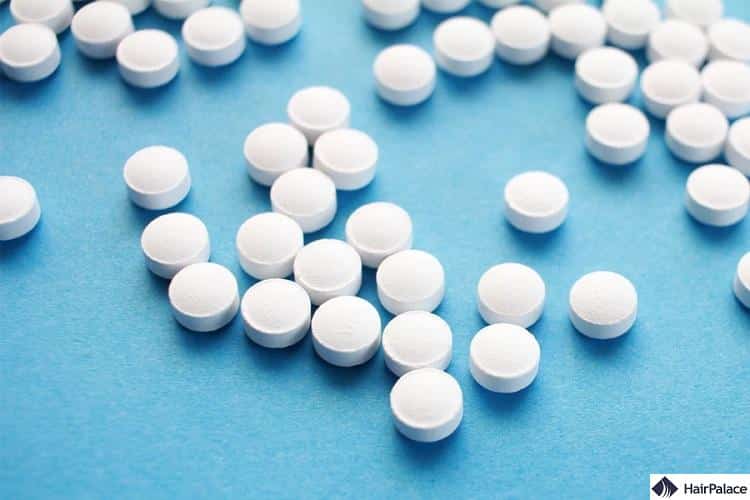
The mechanism behind topical finasteride
Let’s take a closer look at how finasteride works.
It works on a biological level to correct and regulate hormone levels.
This, in turn, can reduce the hair loss rate resulting from hereditary conditions like androgenic alopecia.
Finasteride works by inhibiting the enzyme which converts typical testosterone into a more concentrated form, DHT.
Even in topical form, finasteride reduces scalp DHT levels, offering adequate protection for hair follicles.
Another benefit is increased stimulation of hair follicles and hair growth.
The medication increases the production of stem cell factors in skin tissue, a protein that can help increase the number of active hair follicles.
This can dramatically increase hair density and hair count in androgenetic alopecia sufferers.
The efficacy of topical finasteride
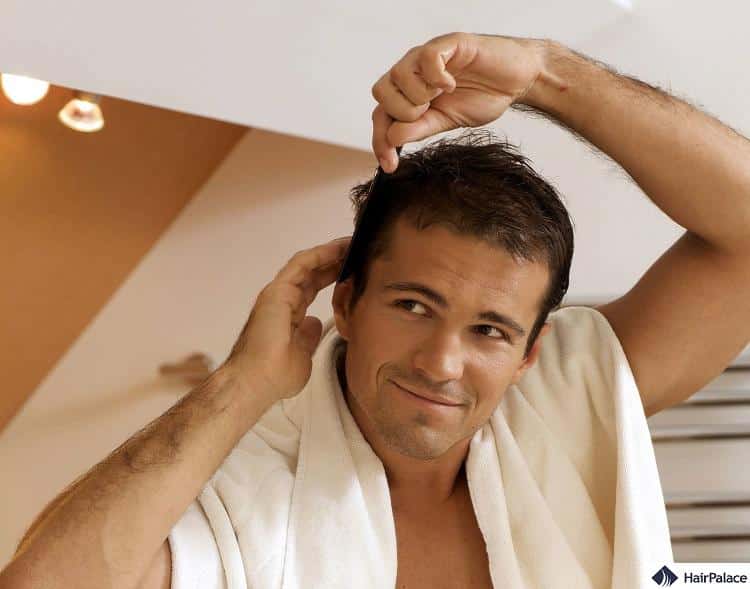
Like any medication, there is much scrutiny into how effective finasteride is in treating male pattern baldness and stimulating hair regrowth.
Considering the recent finasteride topical solution, researchers are keen to have more data and studies to confirm its efficacy.
What we know is that topical finasteride effectiveness hasn’t been clinically proven the same way its oral counterpart has.
However, recent studies suggest that patients who take topical solutions will have a lower risk of developing side effects and complications.
Studies have shown that finasteride can be highly effective in treating some people’s hair loss and ineffective with others.
Every patient is unique, and it can depend on their specific medical history, general health, and the extent of their hair loss.
That said, finasteride is still one of the more popular forms of medication in treating hair loss.
It is considered safe to use, has FDA approval for male patients, and can be used alongside another hair loss treatment, like Minoxidil, for a versatile and diverse treatment.
Although it can lead to a significant decrease in hair fall over time, only by discussing your options with your doctor will you know whether finasteride is an appropriate choice to treat hair loss.
What the research says
Some studies have examined the effectiveness and potential of both topical and oral finasteride.
One conducted in 2014, for example, found that a sample size of men using topical finasteride achieved the same hair growth results as another group of men taking 1 mg of oral finasteride.
Another study concentrated on DHT levels in the body.
The hormone levels of 24 men suffering from male pattern hair loss showed a 68-75% reduction with topical finasteride compared with 62-72% with an oral form.
Hair loss is complex, with different types, severities, and other contributing factors.
If you have severe, long-lasting, or fast-progressing hair loss, you may not enjoy the same results as studies have shown.
For this reason, you should start treatment as soon as possible to enjoy the best hair growth.
Over time, male androgenetic alopecia can result in permanent baldness, where only surgical treatments like a hair transplant (preferred method: FUE hair transplant)can help.
For this reason, you should start treatment as soon as possible to stimulate hair growth.
Topical finasteride before and after
Topical finasteride side effects
As with any medication used to treat hair loss, there are some finasteride topical side effects that you and your doctor need to be mindful of.
Whether used in its liquid form, as a spray, or as finasteride gel, you might experience itching, burning, or redness around the scalp on application.
These finasteride side effects in men often resolve on their own in a few days.
While side effects are more commonly associated with oral finasteride, you might experience include developing a skin rash or hives, dry skin, and swelling.
You may also notice increased amounts of dandruff, too.
More severe side effects include difficulty breathing, erectile dysfunction, and a dramatic reduction in Prostate-specific antigen levels (PSA).
These levels are used in screening for potential prostate cancer.
We recommend seeking professional medical advice if you experience any of the above symptoms.
Your doctor will be able to evaluate whether finasteride is an appropriate treatment for hair growth and suggest practical ways to alleviate symptoms.
Finasteride is not prescribed to women or children because of its potent effects on hormone levels, as the drug can increase the risk of congenital disabilities for pregnant women.
It is not a viable way to treat female pattern hair loss.
Topical Finasteride FAQ
Finasteride is a prescription-only medication. You cannot simply buy over-the-counter finasteride without visiting your doctor for a prescription.
Many pharmacies may sell topical solutions that combine hair loss medication, like finasteride and Minoxidil. And online stores, like Sons, offer a regular supply of combination sprays (£28 per month) but will still require you to answer questions during your consultation.
Apply it to the scalp as directed by your doctor, usually once daily. Massage it gently into the affected areas. Wash your hands after applying.
Do not experiment with any prescribed medication, including finasteride. Although many online tutorials suggest making the treatment at home, we strongly advise against this for many essential reasons.
Oral finasteride tablets contain several inactive ingredients that can irritate and damage your scalp when crushed into a topical solution.
Also, when creating a topical solution, you cannot properly monitor and regulate your dosage, meaning your level of treatment can fluctuate. You could develop a severe side effect from taking more finasteride than advised.
Apply it by dispensing the prescribed amount onto your fingertips and then evenly spreading it onto the scalp area affected by hair loss. Gently massage it into the scalp. Follow your doctor’s instructions regarding the frequency and dosage. Wash your hands thoroughly after application.
Last medically reviewed on May 9th, 2025
- Piraccini BM, Blume‐Peytavi U, Scarci F, Jansat JM, Falqués M, Otero R, Tamarit ML, Galván J, Tebbs V, Massana E, Topical Finasteride Study Group. Efficacy and safety of topical finasteride spray solution for male androgenetic alopecia: A phase III, randomized, controlled clinical trial. Journal of the European Academy of Dermatology and Venereology. 2022 Feb;36(2):286-94.https://doi.org/10.1111/jdv.17738
- Suchonwanit P, Iamsumang W, Leerunyakul K. Topical finasteride for the treatment of male androgenetic alopecia and female pattern hair loss: a review of the current literature. Journal of Dermatological Treatment. 2022 Feb 17;33(2):643-8.https://doi.org/10.1080/09546634.2020.1782324
- Lee SW, Juhasz M, Mobasher P, Ekelem C, Mesinkovska NA. A systematic review of topical finasteride in the treatment of androgenetic alopecia in men and women. Journal of drugs in dermatology: JDD. 2018 Apr 4;17(4):457.
- Mazzarella GF, Loconsole GF, Cammisa GA, Mastrolonardo GM, Vena GA. Topical finasteride in the treatment of androgenic alopecia. Preliminary evaluations after a 16-month therapy course. Journal of dermatological treatment. 1997 Jan 1;8(3):189-92.https://doi.org/10.3109/09546639709160517
- Caserini M, Radicioni M, Leuratti C, Annoni O, Palmieri R. A novel finasteride 0.25% topical solution for androgenetic alopecia: pharmacokinetics and effects on plasma androgen levels in healthy male volunteers. Int J Clin Pharmacol Ther. 2014 Oct;52(10):842-9.https://doi.org/10.5414/CP202119

